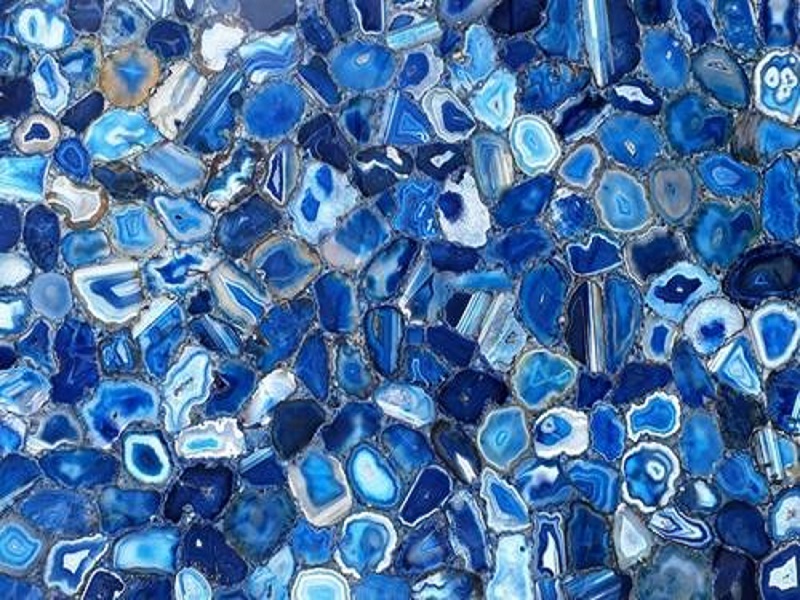- October 24, 2024
- Fusion Gemstones
- 0
Polishing a slab is a rewarding process that brings out the natural beauty and vibrant colors of this unique stone. Whether you’re an experienced rock collector or a beginner looking to add some shine to your Agate Slabs, this step-by-step guide will help you achieve a smooth, polished surface. The process may take some time, but with patience and the right tools, you’ll be able to turn a rough slab into a stunning, glossy piece.

Know the Tools and Materials
How to Polish an Agate Slab?
- Sandpaper (various grits)
- Water or a water drip system
- Polishing compound
- Soft cloth or buffing pad
- Grinding wheel (optional)
Step-by-Step Procedures:
- Inspect the Slab: Before beginning, carefully inspect your slab for cracks, uneven surfaces, or imperfections. The goal is to determine how much polishing will be necessary. For slabs with deep cracks or uneven surfaces, you might want to use a grinding wheel to smooth out these areas before moving to finer sanding and polishing.
- Start with Coarse Sandpaper (80-120 Grit): If you’re not using a grinding wheel, begin by sanding your slab with coarse sandpaper, typically around 80-120 grit. This is the initial stage where you’ll remove any large scratches, rough edges, and surface imperfections. Be sure to wet the slab and the sandpaper during this process. Water helps reduce dust, keeps the stone cool, and prevents cracking.
- Move to Medium Grit Sandpaper (220-400 Grit): After smoothing the surface with coarse sandpaper, it’s time to move to a medium grit, like 220 or 400. This will refine the surface even more by removing the scratches left from the previous stage. Continue to wet the slab and use smooth, even strokes while sanding.
- Use Fine Grit Sandpaper (600-1200 Grit): Now that the surface is relatively smooth, you can start using fine grit sandpaper, ranging from 600 to 1200. At this stage, you’re working to create an almost glossy surface. Fine grit will remove any smaller scratches and give the agate a satin-like sheen. Again, always use water during this step to protect the stone and improve the results.
- Polishing with Extremely Fine Grit or a Polishing Compound: Once you’ve sanded your slab with the finest grit, it’s time to polish it to perfection. You can either use extremely fine sandpaper (2000 grit or higher) or a specialized polishing compound made for stones. Apply the compound to a buffing pad or a soft cloth and polish the slab in circular motions. If you’re using a compound, start by applying a small amount and gradually add more as needed. Keep polishing until you achieve the desired level of shine. Polishing may take some time, but the effort will be worth it when you see the beautiful natural colors of the agate coming through.
- Final Buffing: After polishing, use a clean, soft cloth for the final buffing. This step will help bring out the full luster of your polished slab, giving it a professional-quality finish. Continue buffing until the surface is completely smooth and glossy.
Tips for Best Results:
- Take your time: Polishing a slab is a gradual process. Rushing through the sanding stages may result in scratches or an uneven surface, so it’s important to be patient and methodical.
- Keep it wet: Always use water during sanding to prevent the stone from overheating and to reduce dust.
- Use the right tools: If you’re polishing more than one slab or working with large slabs, consider investing in a lapidary machine. This can make the process faster and more consistent.
Conclusion
Polishing a slab requires patience and attention to detail, but the result is a beautifully smooth and shiny surface that highlights the natural beauty of the stone. With the right tools and technique, you’ll be able to transform a rough slab into a polished, vibrant piece. Whether you’re adding it to your collection or using it in a craft project, the effort you put into polishing will make your slab truly shine. For high-quality slabs and other gemstones, check out Fusion Gemstones India, a trusted source for gemstone enthusiasts.
